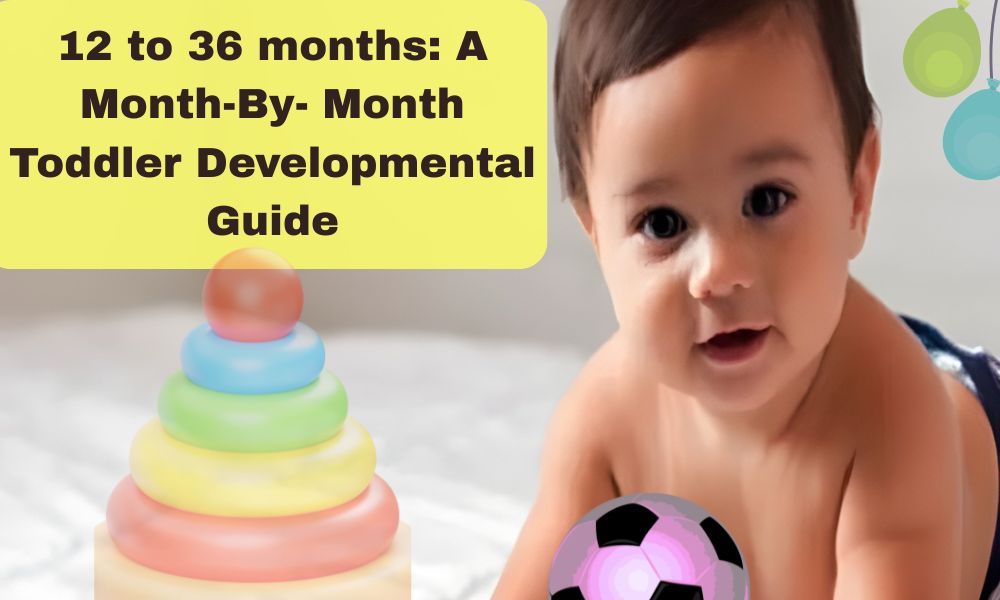Potty Training Step by Step Guide For the Busy Moms
Tanzeel Mehak
October 13, 2025
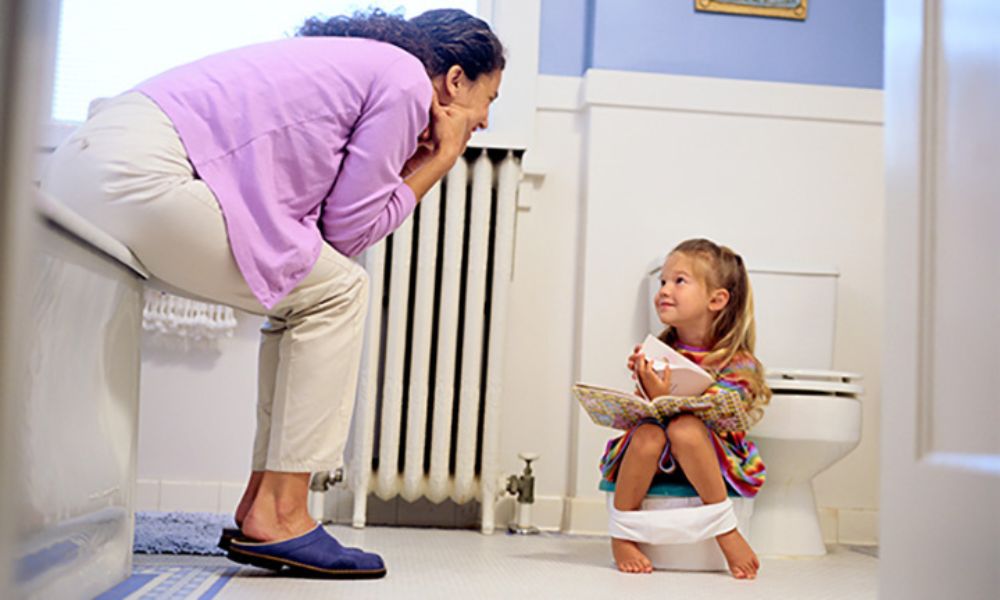
Potty training feels like a moving target, One day looks promising; the next brings puddles, protests and laundry. You want progress, not battles but advice conflicts and confidence sinks.
A calm plan can help you the most. Start with readiness signs, set up bathrooms, choose a potty or seat and use short, regular sits. Add praise, wipes, easy clothes and predictable routines.
This article guides you through potty training step by step, from readiness signs to outings and night training, using simple routines.
Before You Begin: Set Up for Success
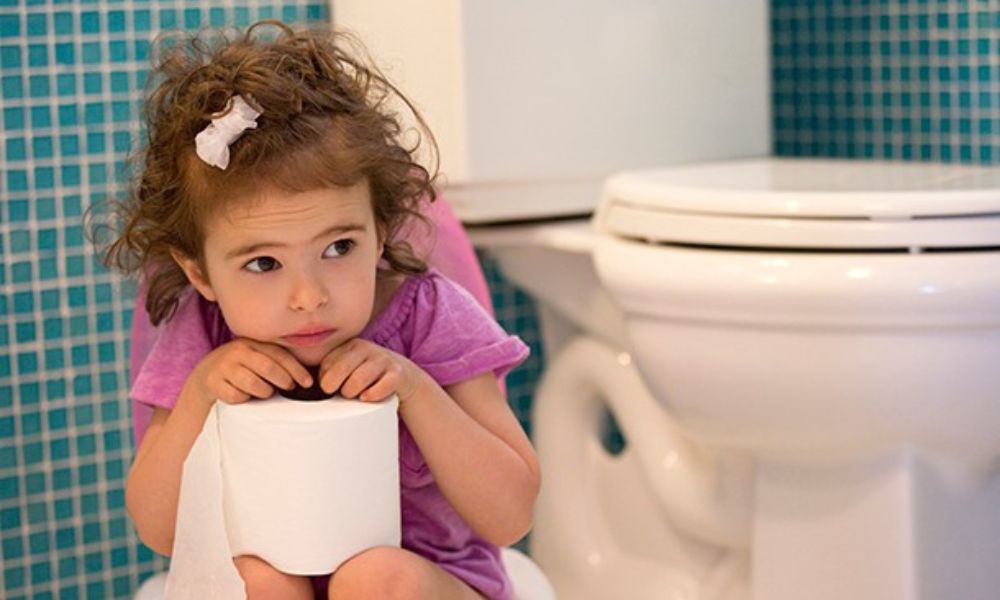
A calm setup helps everyone; this guide walks through potty training step by step so progress feels steady and predictable. Learn toddler development 12 to 36 months. Set clear expectations, prepare the space and choose a pace that fits family life. Small, steady steps beat pressure, rushing and mixed messages every time.
Know the Readiness Signs
When a toddler’s body and mind are prepared, progress feels natural and accidents drop. Watch daily patterns, not birthdays and trust consistent signs over one good day.
- Dry for at least one hour between changes or after naps.
- Tells before or just after peeing or pooping, with simple words or gestures.
- Hides to poop, or shows interest in the bathroom and handwashing.
- Pulls pants up and down and follows two simple steps without help.
Pick a Training Style That Fits
Match the method to temperament, schedule and support. A calm, predictable plan works better than a strict countdown. Choose one approach and stay consistent for several days before changing course.
- Three day jumps start at home, with frequent sits and close supervision.
- Gentle, routine based start with regular sits after waking and meals.
- Hybrid plan: weekend boost, then a simple weekday schedule for daycare.
- Stubborn personalities: offer choices, use neutral language, avoid power struggles.
Stock the Right Gear
Keep tools simple and within reach. The goal is independence, quick cleanup and fewer barriers. Place supplies where they are used so toddlers connect steps without reminders.
- Potty or seat insert with a sturdy step stool for safe footing.
- A basket of spare pants and underwear in the bathroom or hallway.
- Wipes, foam hand soap, a favorite book, and a basic kitchen timer.
- Travel kit with spare clothes and a mattress protector for later nights.
Make Your Home Potty Ready
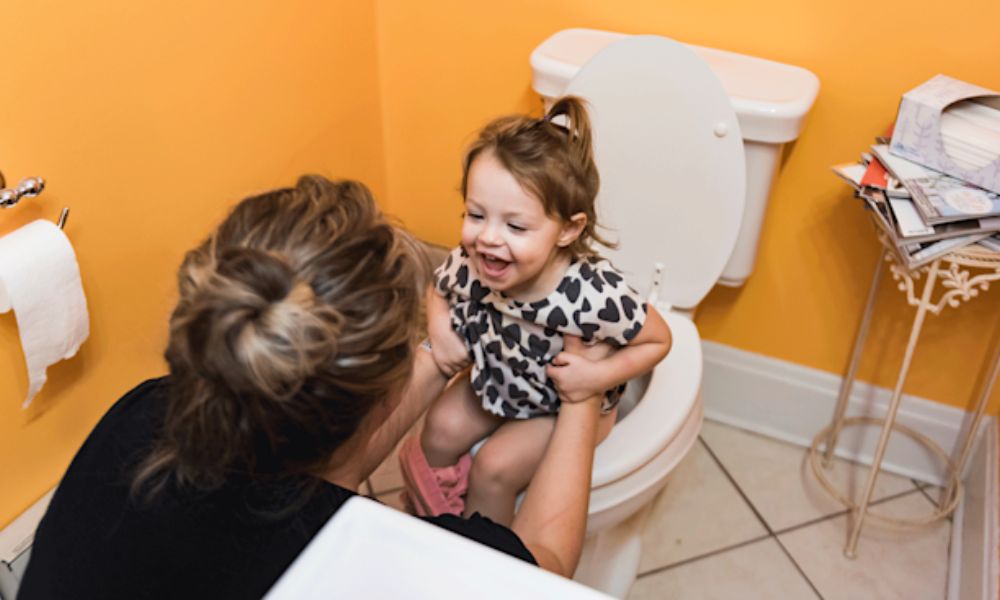
Short walks to a potty, visible towels and simple phrases prevent last second panic. Practice the flow: sit, wipe, flush, wash, praise.
- Keep a potty or seat insert on each floor for quick access.
- Use low shelves or hooks for towels and wipes toddlers can reach.
- Repeat one cue phrase for toilet time, such as “Potty, then wash hands.”
- Keep spare clothes visible and a small cleaning kit ready nearby.
Day Zero Prep: Calm Setup Day
The prep day makes tomorrow familiar; you’ll follow potty training step by step with clear words and short practice sits. Prepare your child and home, agree on simple words and practice small steps so tomorrow feels familiar, not scary.
- Explain the Plan in Simple Words: Use the same potty words each time. Explain tomorrow’s plan in simple steps so your toddler expects short sits, quick praise and hand washing.
- Practice Pull Down, Sit, Wipe, Flush, Wash: Rehearse the sequence with clothes on. Choose easy pants without buttons or strings. Keep a stool and seat insert so sitting feels steady and safe.
- Pick Rewards That Are Easy and Healthy: Use a simple sticker chart and rewards like story time or a song. Keep praise specific and calm. Skip big toys that create pressure.
- Involve Siblings Without Distraction: Give the baby a safe spot nearby, like a high chair with toys or a bath play. Invite your trainee to show the skill proudly.
Day 1 Plan
Day one stays close to home; follow potty training step by step with timed sits, easy clothes and quick, specific praise. You lead the routine; your toddler leads signals.
Morning Routine
- Undies or commando at home: Choose underwear or commando at home to notice signals faster. Easy pants avoid delays. Stay close, remind gently and walk to the potty without rushing.
- Potty sits every 45 to 60 minutes: Schedule sits every forty five to sixty minutes. Finish play, then walk calmly to the bathroom together, offering a brief choice before sitting.
Praise That Works
- Specific, calm, quick: Give specific, calm, quick praise within three seconds. Smile, sticker, clap. Skip big prizes that add pressure. Keep tone steady so confidence grows daily.
Accidents Happen
- Clean, reset, move on. No shame: Help your child dump, flush and wash hands. Change clothes calmly. Restate the plan, return to routine. Skip lectures. Accidents teach and decrease next time.
Day 2 Plan
Day two builds confidence through small stretches and a gentle test outside home. Follow your child’s cues, keep praise steady and use simple tools that make each step feel familiar.
Stretch The Gaps Gently
- Lengthen sits to cues. Wait for signs, walk calmly to the potty. Increase intervals by ten to fifteen minutes, keeping praise steady and routine consistent.
Add a Short Outing
- Plan a short, calm trip. Pack spare clothes and wipes. Use a familiar restroom on arrival. Offer a sit before leaving and another before home.
Introduce A Simple Sticker Chart
- Keep motivation light. Use a small chart for sits, tries and handwashing. Give a sticker right away, plus praise. Save bigger rewards for weekly milestones.
Day 3 Plan
On day three, focus on confidence and independence while you keep structure steady, follow more signals, support poop comfort and review what worked. Progress should feel natural, not forced.
Follow The Child’s Signals More
- Watch for stillness, hiding, fidgeting or a pause in play. When you see a cue, walk calmly to the potty together and praise quick tries.
Practice Poop Confidence
- Warm drink after meals: Offer a warm drink after meals to trigger the natural urge. Provide foot support with a stool, relax shoulders, and give privacy without leaving completely.
- Read on the potty for a few minutes: Bring a calm book and read for three minutes. Keep sits brief and positive, then try again later. Avoid pressure or timers that create stress.
Review What Worked and What Didn’t
- Note times with dry gaps, quick sits and calm wipes. Adjust intervals, clothing, or cues. Keep what worked, remove friction and plan tomorrow’s schedule together.
Your Weekly Potty Schedule
A steady plan links body cues to routine; keep potty training step by step with sits after waking, meals, naps and bedtime. Consistency builds confidence, reduces accidents and helps toddlers link body signals with the bathroom routine.
- Sample Daily Rhythm: Plan sits after waking, after meals, before nap, before bath and before bed. Add a pre outing site. Keep reminders short, cheerful and consistent every day.
- Nap Time and Quiet Time: Offer a calm potty sit before sleep. Dim lights, lower voices, skip excitement. Use simple words, quick praise, then start a nap or quiet play.
- When to Nudge and When to Wait: Give a nudge at routine times or clear cues. If resistance rises or play is deep, wait, offer choices and try again in ten minutes.
Troubleshooting Guide
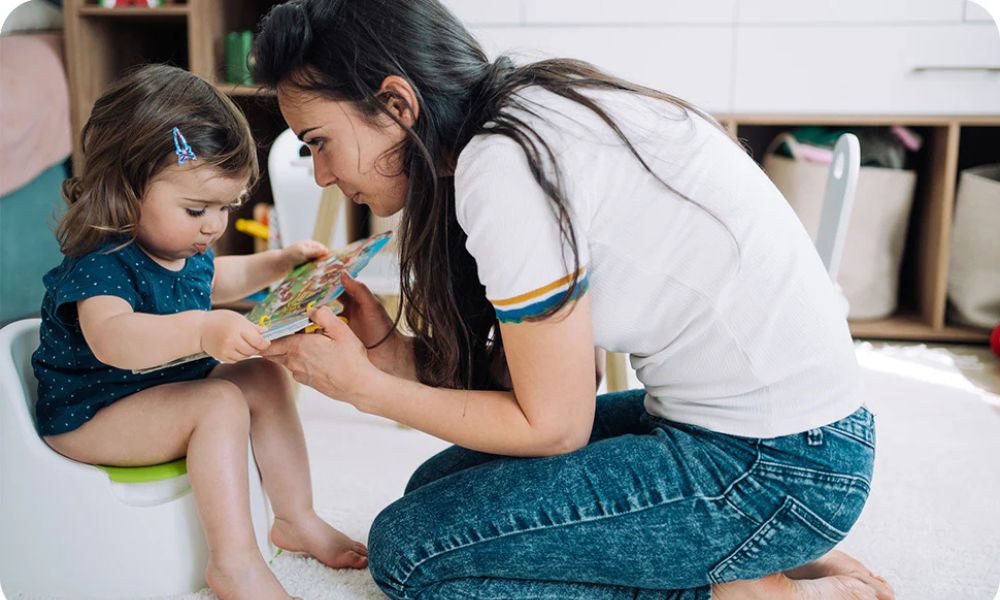
When bumps appear, adjust one thing at a time and continue potty training step by step to rebuild confidence.
- Won’t Poop On The Potty: Soften stools with water, pears, prunes and fiber foods. Offer privacy, steady foot support and a brief sit after meals. Praise tries, not results. If fear is strong, allow a diaper briefly, then tip poop into the toilet to build the link.
- Fear of Flushing or Sitting: Model first so the routine feels safe. Add a short song or a small potty only toy. Keep it brief and cheerful, then extend slowly. Let your child step away before flushing and watch once they feel ready.
- Power Struggles and “No”: Offer simple choices to share control. Potty now or in five minutes. Seat insert or small potty. Use neutral language, skip lectures and reset the routine. Calm limits and predictable times beat arguments and bribes.
- Constipation and Hard Stools: Increase fluids, fruit, vegetables and whole grains. Schedule relaxed sits after meals with a stool for stable feet. Some other Potty training problems. Treat pain first. If stools stay hard or accidents worsen, speak with the doctor before pushing training.
Conclusions: Potty Training Step by Step
Progress grows from calm routines and small, steady steps. If today feels messy, pause, breathe and return to simple cues. Celebrate each try. Confidence builds when you keep language gentle and expectations clear.
Learn potty training step by step for your toddler’s development. Some weeks move fast, others slow down. That is normal. Adjust the plan, protect sleep, soften stools and keep praise specific. If worries linger, speak to a doctor. You and your toddler can do this.

